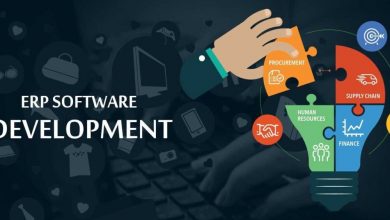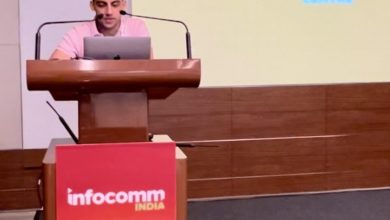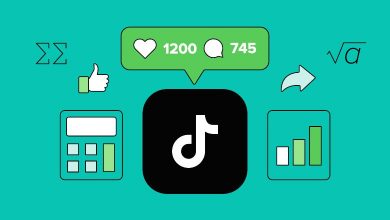The Intaker Imperative: Why OptiVis's Strategic Systems Automation is the Next Mandatory Evolution for Law Firms
Executive Summary: The Convergence of AI, Velocity, and Security
The legal industry is undergoing a fundamental technological mandate: adapt to Artificial Intelligence (AI) or cede market share to competitors who do. While general AI adoption among legal professionals is high (79% use AI, with 84% expecting growth), adoption remains low (around 20%) in high-volume, competitive practices like Personal Injury (PI) and Family Law.
This technological reluctance exacerbates the core operational failure: the industry’s massive $109 billion annual revenue leak 1 caused by slow response times and inconsistent follow-up. OptiVis: The Strategic Systems Automation Firm has positioned itself as the specialized expert to close this gap. By architecting systems that blend cutting-edge security architecture with guaranteed intake velocity, OptiVis transforms lead leakage from a liability into a highly controlled, predictable revenue stream.
The firm’s overwhelming value is rooted in its ability to enforce non-negotiable operational consistency, particularly in PI firms where speed is the primary determinant of success.
I. The Legal Tech Mandate: Velocity and Security
The latest trends in legal technology are moving beyond simple document review and focusing on two critical operational vectors: client acquisition speed and data sovereignty.
1. The Velocity Crisis in PI and High-Volume Practices
For PI, Criminal Defense, and Family Law, speed-to-lead is the single greatest competitive advantage.2
● The Conversion Uplift: Firms responding to leads within one minute achieve 391% higher conversion ratescompared to those contacting leads after 30 minutes.3 The window is unforgiving; conversion rates drop by half if the first follow-up attempt shifts from five minutes to ten minutes.5
● The After-Hours Failure: Traditional 9-to-5 operations are systematically abandoning the market. A shocking 97% of high-intent legal calls occur outside standard business hours 6, yet
60% of after-hours leads are never contacted.2 This failure to maintain 24/7 engagement guarantees loss.
● The Persistence Problem: Manual systems consistently fail to convert leads because 80% of conversions require five or more touchpoints 3, but many law firms abandon promising leads after just one or two attempts.2
2. The Shift to Secure, Localized AI
As AI moves into core legal workflows, the imperative for data security and client privilege takes precedence. Cloud-based LLMs present inherent ethical and legal risks concerning attorney-client privilege due to potential data retention and analysis.2
The newest trend is the deployment of secure, localized AI, which enables specialized law firms to gain efficiency without compromising strict data governance standards.
II. OptiVis: The Expert Architecture for Legal Transformation
OptiVis establishes itself as an expert firm not through generalized consulting, but through a specialized, systematic, and architecturally superior approach designed specifically for the security-conscious legal market.
1. The Proprietary 3-Phase Deployment Methodology
OptiVis utilizes a rigorous, proprietary 3-Phase Strategic Systems Automation model to ensure client readiness and success 2:
1. Foundation Services: Focuses on establishing immediate ROI by setting up core infrastructure and ensuring data integrity (CRM setup, marketing automation).12 This acts as a necessary prerequisite to future complex work.222222222
2. System Integration: The core engineering phase, which connects all of the firm’s existing, siloed technology (phone systems, CRM, case management) into one cohesive, automated workflow.2
3. AI Operations (The Advanced Layer): The final tier, which deploys the intelligent automation layer to achieve competitive advantage.2 This systematic progression is crucial for mitigating the typical risks associated with complex IT overhauls in law firms.2
2. Architectural Differentiator: Edge AI and Data Sovereignty
The defining feature of OptiVis’s expertise is its Edge Computing architecture and Local LLM Processing.2 This technical decision is a critical strategic posture for LegalTech:
● Guaranteed Data Sovereignty: By deploying dedicated local hardware (Edge AI) for processing, OptiVis ensures that confidential client information and Large Language Model (LLM) processing never leave the firm’s physical or logical control.2 This creates a
legally defensible platform that fundamentally eliminates the compliance risk inherent in generalized cloud-based LLMs.2
● Low Latency for Critical Intake: Local processing allows for uninterrupted, low-latency operational monitoring, which is vital for time-sensitive lead capture in PI and Criminal Defense. It provides immediate, high-performance capabilities on-site.2
● Customization and Accuracy: Running AI models locally allows them to be highly customized—or fine-tuned—using the law firm’s proprietary internal data, resulting in superior accuracy and context-specific legal reasoning compared to generic, off-the-shelf cloud models.3333333332
III. Overwhelming Value and Critical Functions
OptiVis delivers measurable, overwhelming value by providing critical functions that eliminate the human bottleneck and guarantee consistent performance across the entire firm, particularly in high-volume, time-sensitive verticals.
|
Critical Function Provided |
Value Delivered to the Law Firm |
Quantifiable Result |
|
Guaranteed Instant Response (24/7) |
Secures the “First Responder Advantage” regardless of time of day (evenings, weekends, holidays), directly monetizing the 97% of calls that occur after hours.6 |
391% higher conversion ratesfor instant engagement.4 |
|
Systematic Follow-Up Workflows |
Eliminates human error and abandonment by enforcing persistent, multi-channel outreach, meeting the 5+ touchpoints required for conversion.3 |
95% Lead Capture Rate (vs. 22% industry average 2). |
|
High-Fidelity Lead Qualification |
Intelligent automation performs initial, time-intensive screening of prospects (e.g., jurisdiction, conflicts, damage thresholds).2 |
Partners save the equivalent of up to 32.5 working days per year on administrative tasks, maximizing their billable time.7 |
|
Centralized Performance Governance |
Imposes a standardized, professional intake experience across multi-location firms, eliminating the conversion variance caused by inconsistent staff and slow offices.2 |
Achieved 30% system-wide conversion uplift for multi-location firms.2 |
|
Revenue Recovery |
Turns previously lost opportunities into signed cases by maintaining constant, systematic engagement and converting leads before competitors can.2 |
Clients recover between $300,000 and $2.1 million in annual revenue.2 |
The financial leverage of this solution is immediate. The typical firm achieves a full return on the automation investment in an average of 2.4 days to 6 weeks through captured cases alone.2OptiVis shifts the intake function from an unpredictable cost center prone to revenue leakage to a predictable, highly efficient revenue engine.





